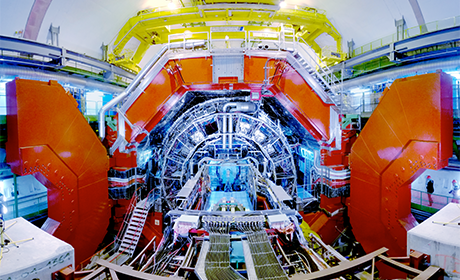Subatomic Particles Used As Probe
29 March 2017
Heidelberg physicists test properties of quark-gluon plasma

Photo: John Vogel / CC BY-SA 3.0
In the early universe, right after the Big Bang, there was a hot plasma of quark and strong force carriers known as gluons. This quark-gluon plasma existed only about ten microseconds until a phase transition took place, during which the hadrons that make up today's world were formed. Researchers from Heidelberg University have now developed a theoretical model that allows the properties of this plasma to be studied in laboratory experiments. It may be possible to infer the temperature of the plasma, among other things. Prof. Dr Georg Wolschin and his team published the results of their research in the journal “Physical Review”.
The researchers at the Institute for Theoretical Physics based their results on experiments in particle accelerators – especially the Large Hadron Collider (LHC) at the CERN European research centre in Geneva. In the LHC, particles are made to collide at high speed and with high kinetic energy. "A quark-gluon plasma can be generated there for a very short time in collisions between heavy ions such as lead," explains Prof. Wolschin. In particular, unstable subatomic particles called heavy mesons are used to investigate the properties of this plasma. According to the Heidelberg researcher, so-called quarkonia are best suited to the experiments. "That is why we also selected them for our modelling. We were able to demonstrate that this type of meson can be deployed as a sensitive probe for studying the properties of the plasma," states the Heidelberg physicist.

